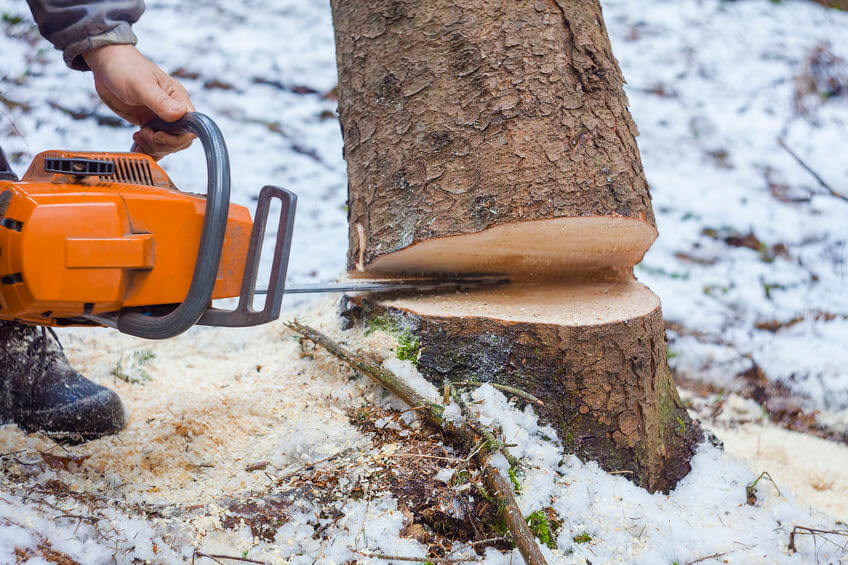Mastering the Timber: Essential Tree Felling Maintenance Services for a Sustainable Landscape
Tree felling is a crucial practice in landscape management that goes beyond merely cutting down trees. It involves a comprehensive understanding of the ecosystem, ensuring that the right trees are maintained while promoting healthy growth in the surrounding environment. As urban areas expand and natural spaces face various pressures, tree felling maintenance services emerge as vital components for sustainability.
Proper tree felling practices not only enhance the aesthetic appeal of a landscape but also contribute to the overall health of the ecosystem. These services ensure that trees are removed safely, minimizing risks to people and property, while also considering the long-term impact on the environment. By mastering the art of tree felling and its associated maintenance, we can create more sustainable landscapes that benefit both nature and our communities.
Understanding Tree Felling Techniques
Tree felling is a crucial aspect of maintaining a healthy landscape, and understanding the various techniques is key to successful execution. Different tree species require distinct approaches, and the method chosen can significantly affect the outcome. The traditional technique involves the notch-and-fell method, where a notch is cut into the tree to guide its fall direction. This process must be carefully planned to ensure safety and minimize damage to surrounding vegetation.

Another effective technique is directional felling, which helps control the trajectory of the tree as it falls. By making precise cuts, the operator can manipulate the fall, directing it away from structures or other trees. This method requires skill and precision, as miscalculation can lead to dangerous situations or unintended damage. Training in these techniques is essential for anyone involved in tree felling services to ensure they are executed safely and effectively.
Finally, understanding release cuts is vital for handling trees that may be leaning or otherwise compromised. These cuts are designed to relieve tension in the wood fibers, allowing for a more controlled fall. Properly assessing a tree's condition and implementing release cuts can prevent the tree from breaking unpredictably, thus promoting safety for both the operator and the surrounding environment. Knowledge of these techniques forms the foundation of proficient tree felling services, contributing to sustainable landscape management practices.
Importance of Maintenance Services
Maintaining trees after felling is crucial for ensuring the health and sustainability of the surrounding landscape. Tree felling can impact soil stability and the overall ecosystem, making it necessary to implement maintenance services that promote recovery and growth. These services help to manage the remaining vegetation, prevent soil erosion, and support the reestablishment of a balanced natural habitat.
Proper maintenance also plays a vital role in preventing potential hazards. After a tree is felled, debris, branches, and stumps can create safety risks for property owners and the public. Regular maintenance services help to clear these remnants, reducing the chances of accidents. Additionally, these services can address any remaining tree roots that may interfere with future landscaping or construction projects.
Lastly, tree felling maintenance services contribute to enhancing the aesthetic appeal of a landscape. By ensuring that the area is well-maintained and visually pleasing, property owners can improve the value of their land. Well-executed maintenance creates a welcoming environment, fosters biodiversity, and allows new plant life to thrive, ultimately supporting a more sustainable landscape.
Sustainable Practices for Tree Management
Sustainable tree management begins with careful planning and assessment of the landscape. Identifying tree species and their health is crucial to making informed decisions. Professionals should evaluate factors such as the tree’s age, growth patterns, and potential hazards. By focusing on trees that pose risks or harm the surrounding ecosystem, felling efforts can prioritize safety without compromising the overall health of the environment.
Incorporating replanting initiatives is another key aspect of sustainable tree management. After felling, https://www.spez-ag.ch/ is essential to consider the reestablishment of native species that foster biodiversity and resilience. This not only helps to maintain the ecological balance but also supports local wildlife. Taking the time to select appropriate tree varieties that suit the local climate and soil conditions ensures that the new plants can thrive and contribute positively to the landscape.
Finally, ongoing maintenance is vital to ensure the sustainability of tree management practices. Regular inspections and care, such as pruning and mulching, can improve the health of remaining trees and newly planted ones. Establishing a routine maintenance schedule encourages strong tree growth and reduces the risk of diseases. Implementing these practices fosters a sustainable landscape that benefits both the environment and the community.